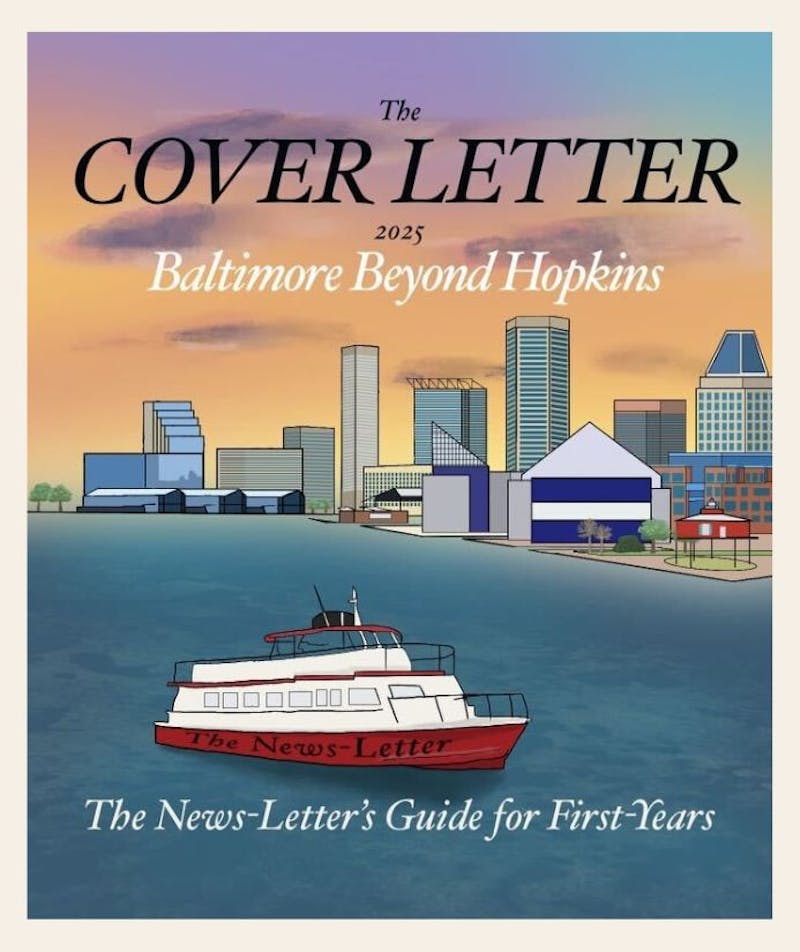Journalist and author Scott Shane discussed the history of his newest work, Flee North: A Forgotten Hero and the Fight for Freedom in Slavery's Borderland, at the Homewood Museum on Tuesday, Oct. 1.
Jeannette Marxen, the Programs and Interpretation Manager for JHU Museums and organizer of this event, emphasized the discussion’s importance in relation to the museum’s focus on public education and Baltimore’s history in an interview with The News-Letter.
“We are still learning so much, and we are continuously uncovering buried histories. [This talk] relates really well as [Homewood] was a site of enslavement, who had slaves attempting to emancipate themselves,” she said.
Free North recounts the true story of Thomas Smallwood, a formerly enslaved, self-educated shoemaker, and his efforts to free hundreds of enslaved people through the Underground Railroad. The book also highlights Baltimore’s role in the domestic slave trade and nationwide abolitionist movements.
Shane began his talk by contextualizing the book’s setting and era: Baltimore in the late 1830s to the 1840s. As part of “slavery’s borderland” – referring to Maryland’s location as the northernmost slave state – the city’s unique demographics played a particular role in the debates over slavery.
“In Baltimore in particular, you could find people on both sides of the slavery debate. You could find slave holders, slave traders, slave catchers, and even abolitionists,” he said.
Additionally, Shane explained that Baltimore served as a hub for separating enslaved families to relocate individual slaves to various southern plantations.
“There was a demand for labor in the Deep South and an excess of labor in the Upper South, [...] so, in many cases, slave-traders sold [slaves] off to the highest bidder in the Deep South, into the cotton industry and the sugar industry,“ he said. “It was done in many cases without any regard for family ties.”
Connecting Baltimore’s history to his novel, Shane then discussed Smallwood’s influence after he gained freedom, particularly his role in the political sphere surrounding the ethics of slavery. For example, Shane explained how Smallwood expressed his attitudes towards the “colonization movement,” which aimed to relocate freed slaves to Liberia.
“[Smallwood] learned that the movement preserved slavery by basically deporting free black people so they wouldn’t interfere, so he became very outspoken against colonization,” he said.
Shane also introduced Charles Tory, a white abolitionist who worked with Smallwood as a journalist. After slaveholders arrested him in Annapolis, Tory vowed to continue fighting against slavery until there were no slaveholders left. Through publishing abolitionist pieces, Tory and Smallwood met and agreed to organize large-scale escapes from slavery. Soon, runaway ads were present in all local papers.
Despite Tory leaving Baltimore for a publishing position in Albany, N.Y., Smallwood continued helping enslaved people escape bondage and publishing about his victories. Notably, Smallwood, under the alias “Sam Weller,” included real names of slaveholders and escapees to embarrass and demoralize the former group. The satirical articles, inspired by Dickens’ literary works, continued to serve as crucial abolitionist media by highlighting the immorality of the slavery system and being the first to coin the term “Underground Railroad.”
Shane emphasized how Smallwood continued helping slaves escape bondage despite the potential consequences.
“The best thing that could happen to [Smallwood] was a long prison term. He might just be shot down on the spot, and he could also return to slavery, separated from his family and shipped south,“ he said. “If that wasn’t enough, he publishes these escapes and ridicules the slave owners. [...] He turned society upside-down.
Mildred Bates, a local community member, commented on the important takeaways from Smallwood’s legacy in an interview with The News-Letter.
“Smallwood was remarkable, inspiring, intelligent, but not well-known. [...] Since this audience was mostly white, it’s important to present this information in many diverse communities,” Bates said.
Attendees appreciated Shane’s historical discussion and emphasized the importance of learning from forgotten stories. In an interview with The News-Letter, Harold Zeckel, who recently moved to Baltimore months ago, commented on the discussion.
“I enjoyed this talk very much [...] since I didn’t know anything about Thomas Smallwood or Baltimore's history,” Zeckel said.





